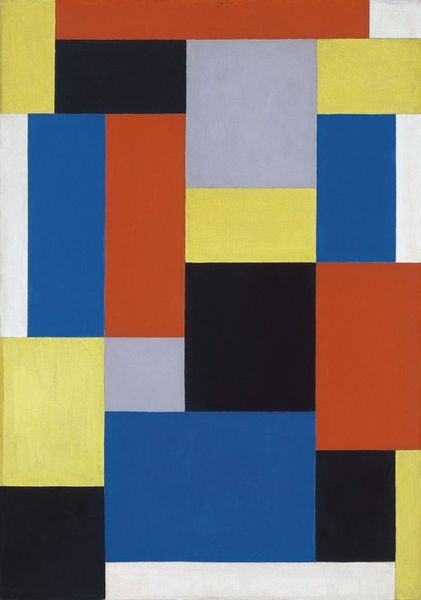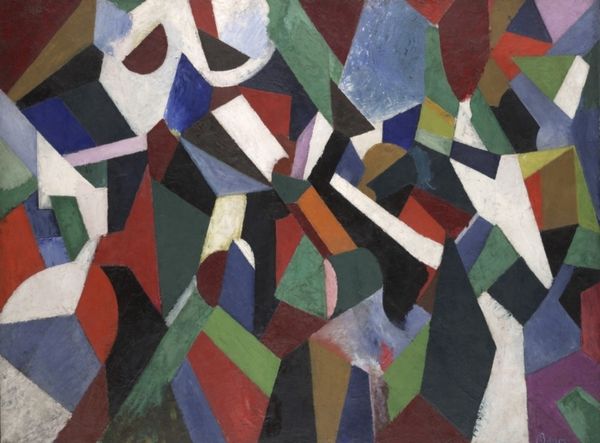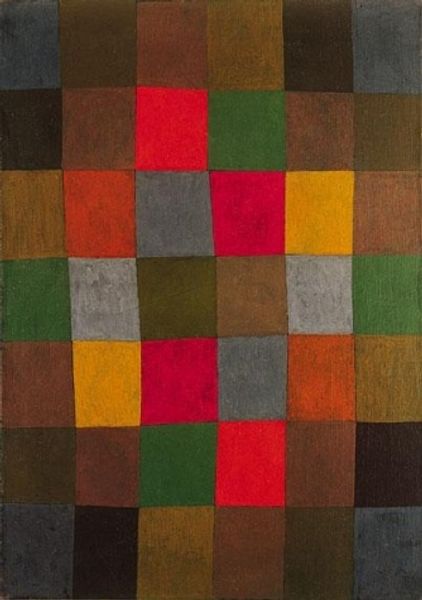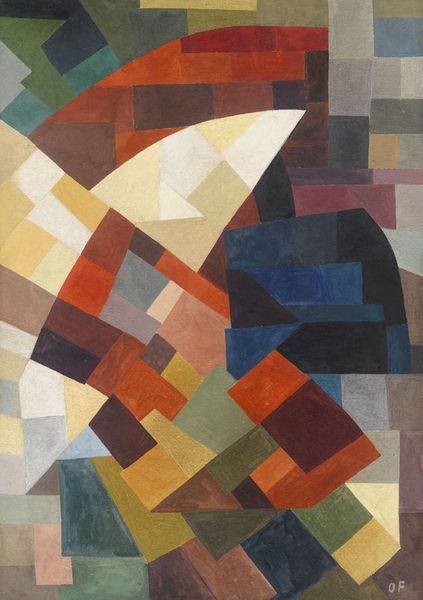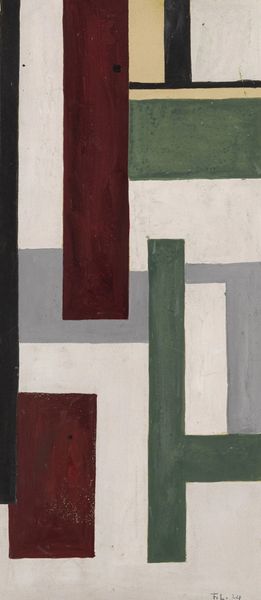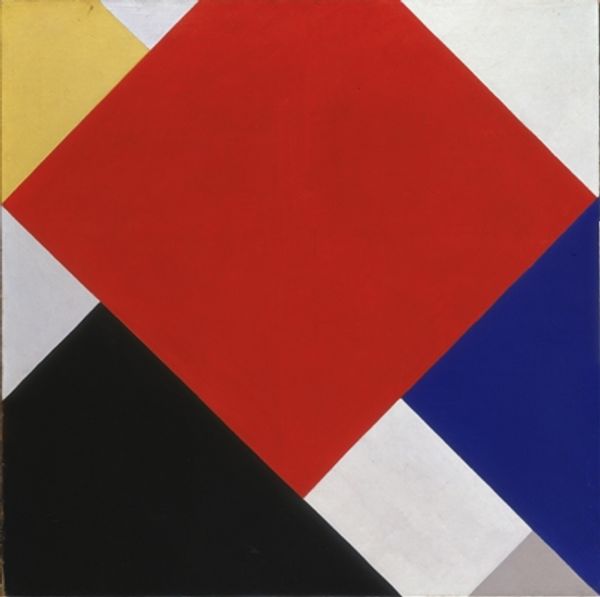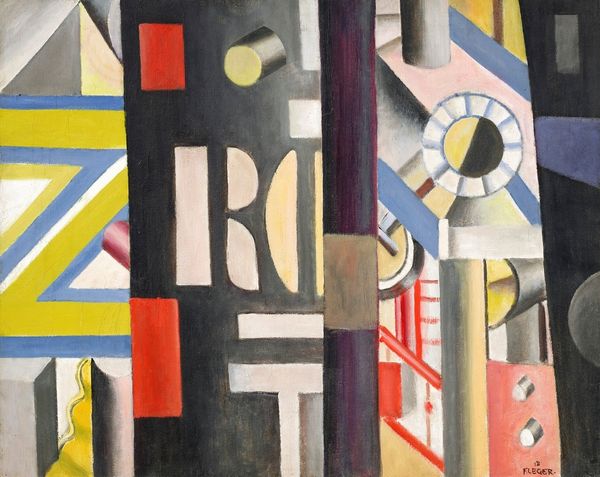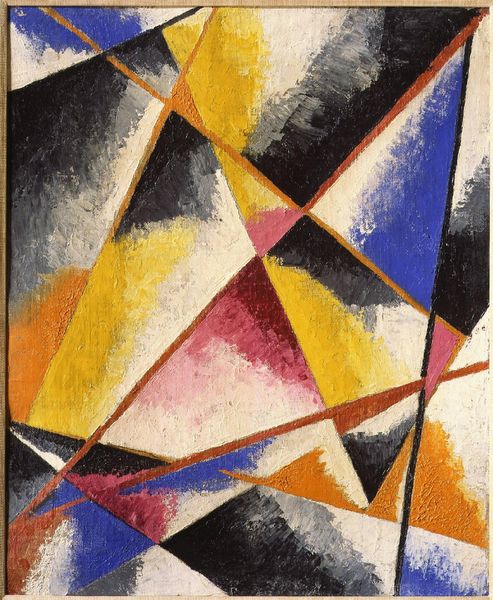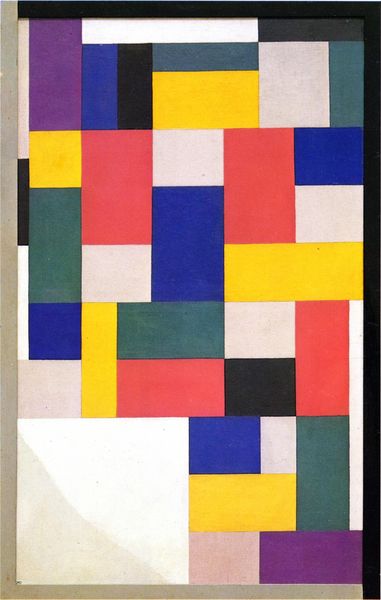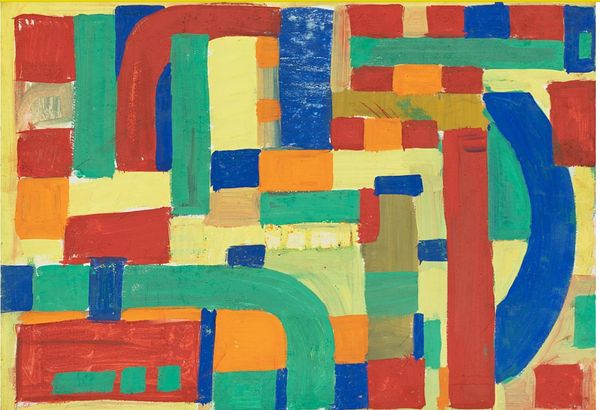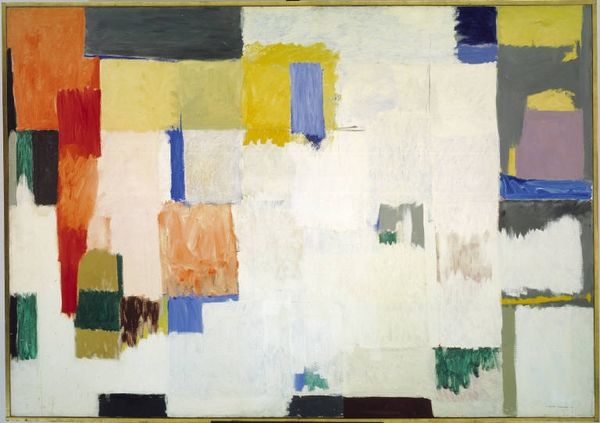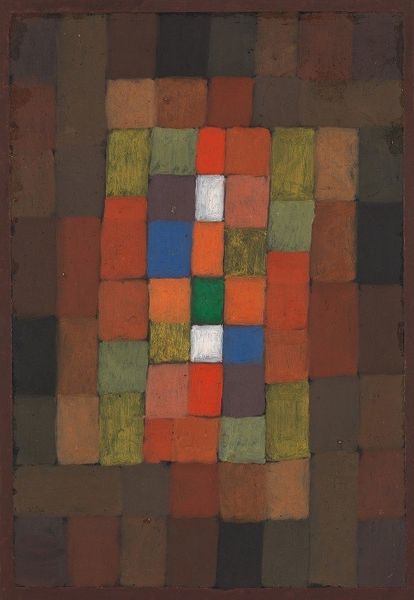
painting, acrylic-paint
#
abstract painting
#
painting
#
geometric composition
#
pop art
#
acrylic-paint
#
abstract
#
oil painting
#
geometric
#
geometric-abstraction
#
modernism
Copyright: Modern Artists: Artvee
Editor: We're looking at Alexander Calder's "Patchwork" from 1969, made with acrylic paint. The composition is all squares and rectangles in vivid colours—red, blue, yellow, orange. It reminds me of a deconstructed Mondrian, somehow... full of life, even a little bit playful. How do you interpret this work? Curator: Playful is a great word. I love that this so-called “Patchwork” painting is all sharp geometry—it’s a fascinating bridge, wouldn’t you agree, between the rigidity of geometric abstraction and Calder’s own whimsy. It looks both planned and intuitive at the same time. What's also compelling here, for me anyway, is how it engages with colour theory of that era; vibrant pops that speak volumes about the optimism of the late '60s, you know? It seems like he is actively exploring a dialogue between colour, form, and maybe even emotion. What colors particularly stand out for you? Editor: I think the strong primary colours stand out. The yellows are so bright. I guess the contrast with the blacks and whites also draws my attention, which really does point towards that optimism you mentioned. Did he create paintings at other stages of his career? Because I know his sculptures so much more. Curator: That’s a keen observation! While known for his mobiles, Calder created paintings and drawings throughout his career; and to me, his 2D work displays an amazing and continuous visual conversation with his 3D creations. This particular “Patchwork”, I think, shows a later career experiment and a painterly testament to geometric shapes he explored in space; so essentially he puts sculpture on a canvas. Editor: I never would have thought of his mobiles when looking at this painting. It feels like such a different body of work to me now. Thank you for the background and insight. Curator: Absolutely, and thank you! It’s exciting how a little historical context can open new ways of seeing and interpreting a piece!
Comments
No comments
Be the first to comment and join the conversation on the ultimate creative platform.
